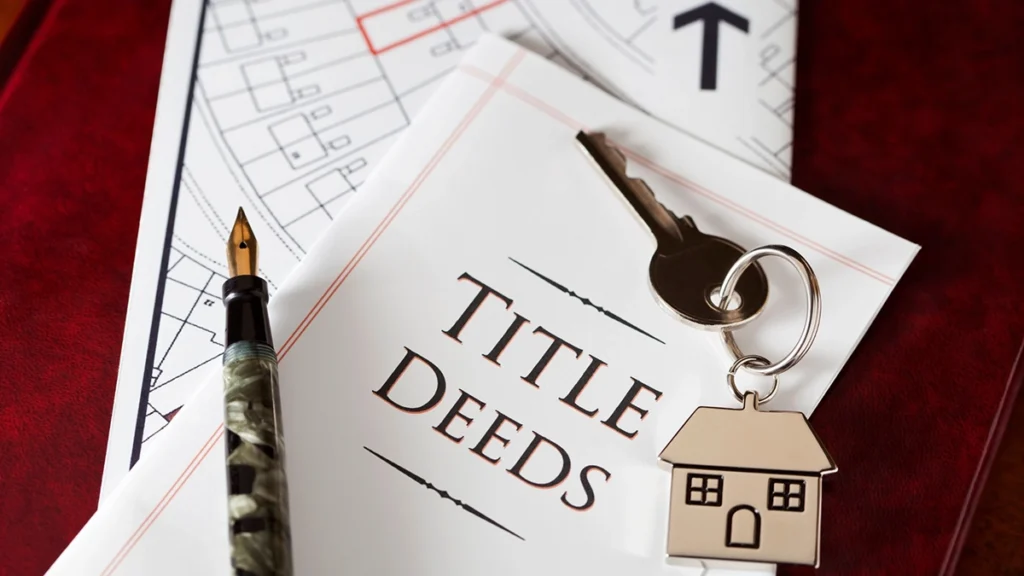Many homeowners are surprised by how quick the process really is. You stay in full control of your property, and once everything is ready, it can often be completed in just a few short weeks.
For families who want peace of mind and a clear plan for the future, this simple document can make all the difference. Here’s how the process works.
The Steps Involved
Creating a Lady Bird Deed involves a few important steps. First, the homeowner or preparer drafts the document with accurate legal descriptions and correct beneficiary names. Even small details matter because one typo can delay recording. Next, the homeowner signs the deed in front of a notary to confirm authenticity. The final step is recording it at the county clerk’s office to make it official. Each stage plays a role in how smoothly and quickly the process moves forward.
Drafting is more than filling out a form. The legal description must match the current deed or recorded plat exactly. A missing comma or abbreviation can cause rejection. The homeowner’s name must also match previous records, including middle initials or suffixes. Once the deed is ready, notarization verifies its authenticity, though scheduling the appointment can take a few days. Recording at the County Clerk of Court’s office depends on local efficiency. Some counties process electronically within days, while others rely on manual systems that can take several weeks.
Typical Timeframe
In most cases, drafting can be completed in a few days if all property information is available. Scheduling a notary usually takes less than a week. County recording offices typically process deeds within one to three weeks, depending on workload. Altogether, most families complete the process within 30 days of starting. That makes the Lady Bird Deed one of the quickest estate planning tools available, especially compared to trusts, which may take months, or probate, which can last a year or more.
Some counties move faster than others. For example, David, a 62-year-old homeowner in North Carolina, gathered his documents early. His Lady Bird Deed was drafted within a week, notarized the following Monday, and recorded before the end of the month. By contrast, homeowners who wait until the last minute or do not have property information ready may see the timeline stretch to two months or longer.
Factors That Affect Processing Time
- Preparedness of the homeowner: Having the current deed, tax records, and beneficiary information ready speeds up drafting.
- Accuracy of the legal description: Errors here can cause rejection and require redrafting.
- County workload: Busy offices may take longer to process new filings.
- Method of submission: Electronic recording is often faster than mailing or in-person delivery.
- Professional preparation: Working with experts helps avoid mistakes that cause delays.
These factors explain why one homeowner may finish in ten days while another waits six weeks. The process itself is straightforward, but preparation makes all the difference.
Why Accuracy Matters
Speed matters, but accuracy matters more. A deed with a missing signature or an incorrect property description can be rejected by the county clerk, forcing the homeowner to start over. This is why many people choose professional preparation services. Even a small typo in a parcel number can delay the process or create issues later if the deed does not match public records.
For example, if a deed leaves out part of a legal description, the county may reject it or worse, the mistake might not surface until heirs try to claim ownership. Fixing such issues after the homeowner passes away can require costly legal steps. A careful review today prevents confusion and protects the home’s future.
Comparing Lady Bird Deeds to Other Tools
Homeowners often ask about timing because they compare a Lady Bird Deed to other estate planning methods. A living trust, for instance, can take weeks of meetings, drafting, and revisions. Once complete, it must be funded, meaning every asset, including real estate, must be transferred into it. That process alone can take months. A Lady Bird Deed, by contrast, handles real estate in one step.
While a will can be drafted quickly, it still goes through probate, which adds months or even years after death. The Lady Bird Deed offers a middle ground: quick setup with long-term control and the ability to bypass probate completely. For many families, that balance makes it the preferred choice.
Why Timing Matters in Estate Planning
The best time to plan is before a crisis. Families who wait until illness or hospitalization often find themselves rushing under stress. A Lady Bird Deed’s short setup time makes it an ideal option for families who want to act quickly while maintaining control. It provides flexibility and peace of mind without the pressure of long legal procedures.
However, “quick” should not mean “later.” Waiting too long can still create challenges, especially if health, family, or legal issues arise. Starting early allows time for review and corrections. In estate planning, acting now always saves more time than reacting later.
How Homeowners Can Speed Up the Process
- Gather your current deed and property tax information before starting.
- Decide in advance who your beneficiaries will be and verify the spelling of their names.
- Schedule your notary appointment early, especially if multiple signers are involved.
- Check if your county offers electronic filing to shorten the timeline.
- Work with a professional to prevent delays caused by avoidable mistakes.
These steps help ensure your process runs smoothly. When preparation comes first, the rest moves faster and with fewer surprises.
Geographic Limitations
Lady Bird Deeds are not available in every state. They are recognized in Florida, Texas, Michigan, West Virginia, Vermont, and North Carolina. In these states, the process is generally fast and efficient. Homeowners in other states may use alternatives such as transfer-on-death deeds, joint ownership, or living trusts, though those options can take longer and involve more paperwork.
Because eligibility varies, it helps to confirm whether your state recognizes Lady Bird Deeds before you begin. This ensures your efforts go toward the right plan from the start.
Long-Term Impact of a Short Process
Although the setup time is brief, the impact of a Lady Bird Deed lasts for years. Once recorded, it guarantees that the property will transfer smoothly and privately, without probate. Families avoid unnecessary costs and long delays. A few weeks of preparation today can spare loved ones months of uncertainty later.
Another benefit is flexibility. If life changes, whether through sale, refinancing, or updating beneficiaries, the deed can be adjusted quickly. This combination of speed and control makes the Lady Bird Deed one of the most practical tools in estate planning.
Which Timeline Fits Best?
Every family’s situation is different. Some appreciate the typical 30-day process, which allows time for review and accuracy. Others, especially those with health concerns, value the ability to complete everything within two weeks. Either way, the Lady Bird Deed is far faster than probate, which often stretches beyond a year. The key is not just how fast it happens, but how well it fits your family’s needs and brings peace of mind.
Key Takeaways
- A Lady Bird Deed usually takes a few weeks to prepare, notarize, and record, with most completed within 30 days.
- Accuracy is more important than speed; even minor errors can delay recording.
- Compared to trusts or probate, Lady Bird Deeds are faster, simpler, and more cost-effective.
- Planning ahead prevents stress and ensures a smoother process.
- Lady Bird Deeds are recognized only in Florida, Texas, Michigan, West Virginia, Vermont, and North Carolina.



